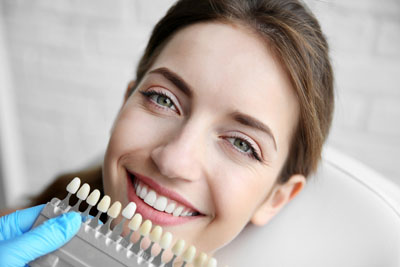Pros and Cons of Teeth Whitening Procedures

Teeth whitening is a popular procedure that helps to restore the natural color of your teeth. It is a proven method for dealing with staining and discoloration. But you need to understand the pros and cons of teeth whitening procedures. This will help you make an informed decision about the option that suits you.
Pros and cons
There are many whitening treatments. The two main categories are the treatments that are conducted by a dentist at the dental office and the different methods of at-home whitening. These options have their pros and cons. Here are some facts about the teeth whitening methods.
In-office bleaching
This method allows a person to get all the whitening done in the dental office in one visit. One of the main benefits of this option is that all the work is done by a dental professional. This significantly increases the chances of the process being effective. This method is also recommended for people who want immediate results.
One downside of bleaching is that this process can increase tooth and gum sensitivity. This may be because of multiple factors including the fitting of the bleaching tray. But any tissue and gum irritation is usually temporary. In-office bleaching is also expensive.
At-home teeth whitening options
There are many types of toothpaste in the market that whiten teeth. These types are abrasive and can help to remove or reduce stains. Some of them contain special polishing agents. They are cheap and easy to find. But their results are restricted compared to other methods that are stronger.
Teeth whitening strips are applied to the tooth surface. These products are readily available in the market and can be found in drugstores. Teeth whitening strips are fairly inexpensive and easy to use. Most of them work but can take a longer time to produce the intended results depending on the strength of peroxide contained. Since the strips are commercially produced and not custom-made for individuals, they can fall or slip off. Sometimes, these strips can cause irritation to the soft tissues and gums.
At-home dental bleach trays are effective but getting the desired results can take longer compared to in-office bleaching. This option involves having the dentist create custom-made bleach trays. The tray which contains a bleaching agent is placed over the teeth for some time over a particular time frame. There are some commercial over-the-counter versions that are available, but a person should consult with a dentist before opting to use them. These are generic sized and may allow the bleaching agent to reach the gums, which can cause irritation.
The right choice
Teeth whitening methods can help to improve your smile. In-office bleaching and at-home whitening options are effective. In-office bleaching can be expensive but it takes a shorter amount of time to achieve the desired results compared to the other options. At-home whitening options are readily available and are cheap. You should learn about the pros and cons of the different methods before choosing the one that works for you. Talking to your dentist will help you make the right choice.
Are you considering teeth whitening in the Everett area? Get more information at https://gkdentaloffice.com.
Check out what others are saying about our services on Yelp: Read our Yelp reviews.
Recent Posts
For those looking to improve how their smile looks, choosing the right cosmetic dentist is key. Because cosmetic dentistry is not a recognized dental specialty, any dentist can claim to be a cosmetic dentist. Therefore, finding the right professional for you can be a challenge. Fortunately, knowing what qualities to look for takes much of…
When it comes to general dentistry practices, these offices typically include primary care dental providers. A general dentist focuses on diagnosing dental problems, treating dental issues, and overall oral health care. General dentists may provide gum care, teeth cleaning, root canals, veneers, bridges, and preventative dentistry. However, just as there are dentists that focus on…
Stepping into a cosmetic dentist’s clinic gives you the chance to look at how your smile can improve. The first visit will be an educational one. It also gives your dentist a chance to know you better. Here are the things that you should expect during your first visit to your cosmetic dentist.The cosmetic dentist…
Your cosmetic dentist can use dental bonding to restore your smile. This is a simple and easy procedure that you can have in one appointment. Knowing how this treatment helps will allow you to appreciate its effects more. Here are the details about how a cosmetic dentist uses dental bonding.Dental bonding has many uses. A…


